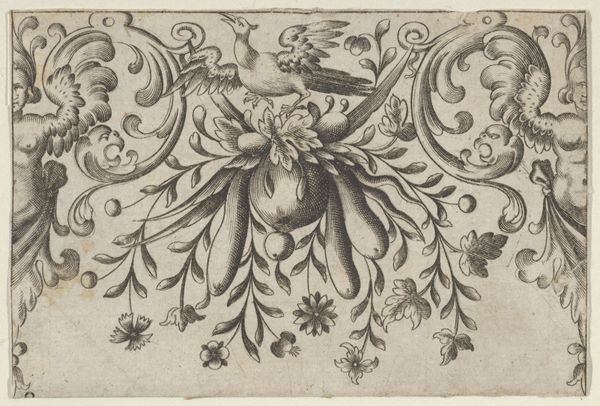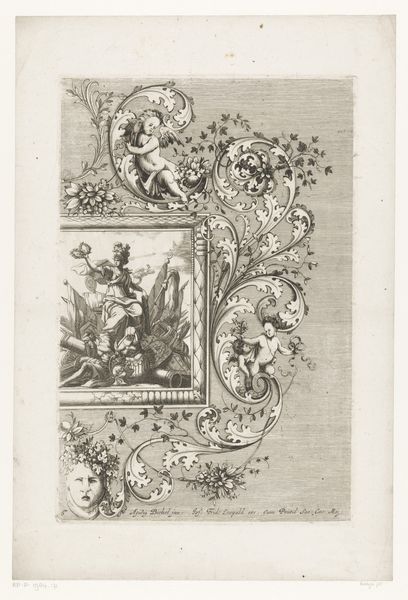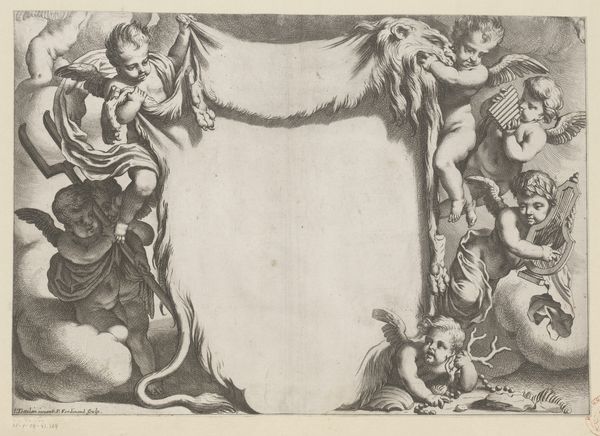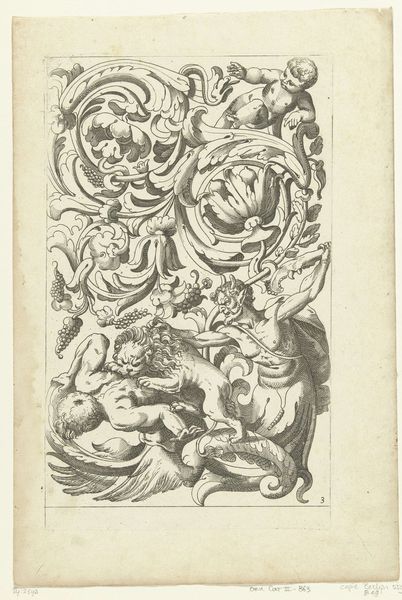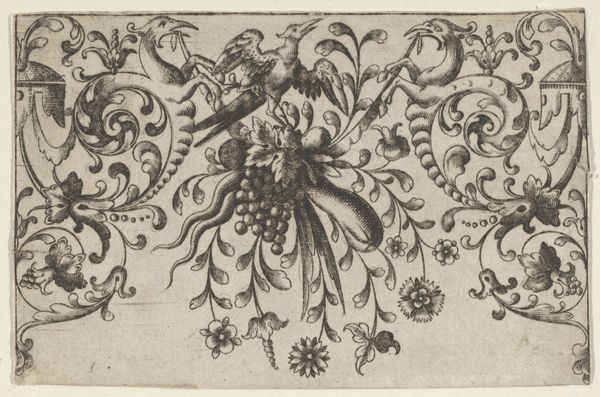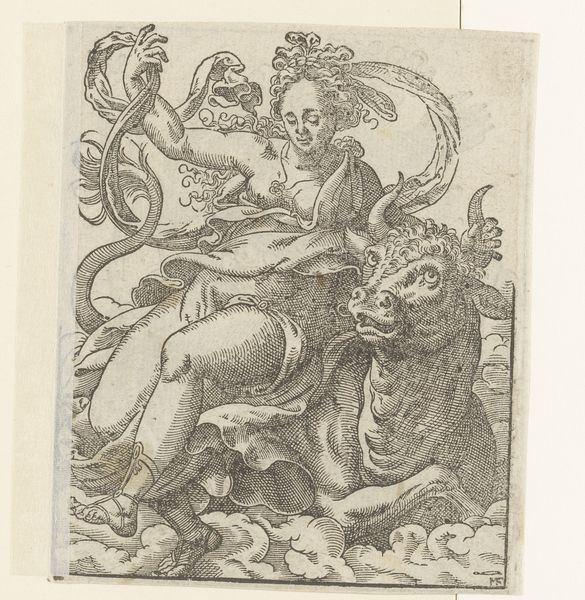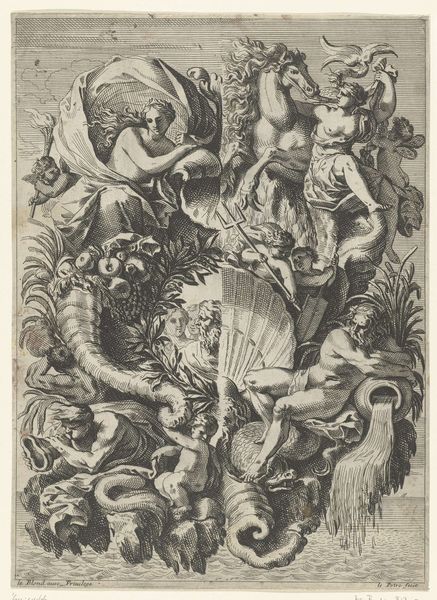
Ornament met cherubijn, lauwerkrans en bloesemtakken voor op gewelf in het Stadhuis op de Dam 1663
0:00
0:00
hubertquellinus
Rijksmuseum
ornament, engraving
#
ornament
#
allegory
#
baroque
#
line
#
engraving
Dimensions: height 173 mm, width 139 mm
Copyright: Rijks Museum: Open Domain
Editor: So, here we have Hubert Quellinus’s 1663 engraving, “Ornament with Cherub, Laurel Wreath and Blossom Branches for the Vault in the Town Hall on the Dam.” The cherub's gaze is striking, and the whole thing feels symbolic… but symbolic of what, exactly? What do you see in this piece? Curator: Well, firstly, let’s situate this engraving within the context of the Amsterdam Town Hall – a potent symbol of civic pride and republican values. Consider the social and political climate of the Dutch Golden Age. How might this ornament reflect or reinforce those values? Editor: It feels almost like propaganda... but propaganda for… what? Prosperity? Civic virtue? Curator: Exactly! Think about the iconography: the cherub, laurel wreath, and blossoming branches. Each element carries symbolic weight. The cherub, often associated with innocence and divine blessing, perhaps represents the city’s purity of intent. The laurel wreath? Editor: That suggests victory or honour. The blossoms, maybe new beginnings, growth and peace? It’s like a visual manifesto. Curator: Precisely. And how does the choice of engraving as a medium further amplify its message? It could be replicated widely, unlike, say, a painting or a sculpture. How might its accessibility democratise the symbolism for a wider audience? Editor: Good point. It makes the statement public and easily shared. So, it’s not just pretty decoration, but a deliberate projection of Amsterdam’s self-image to its citizens, and maybe even the world? Curator: Exactly. It reveals how art serves not just as aesthetic pleasure, but as a tool for shaping collective identity and reinforcing power structures. What does this say about the relationship between art and power? Editor: Wow, I’ll never look at ornaments the same way again. I see now how deeply interwoven it is with history and the intentions of the society that produced it. Curator: And how crucial it is to dissect all those things! I'm glad to have been a part of the discovery.
Comments
No comments
Be the first to comment and join the conversation on the ultimate creative platform.
